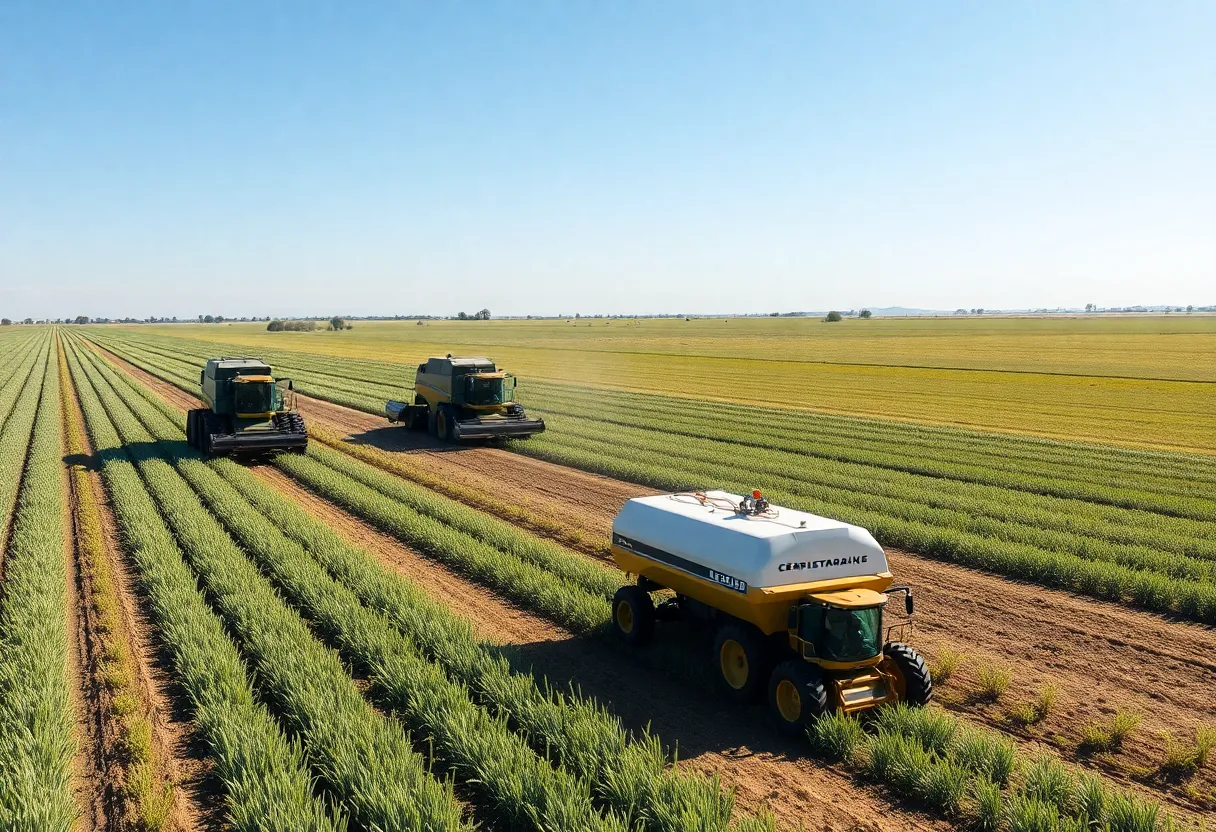California, August 26, 2025
News Summary
California farmers are struggling with severe labor shortages as recent immigration raids have left many agricultural fields understaffed. With approximately 88,000 agricultural jobs unfilled each year in the U.S., farmers are turning to automation for assistance. However, state regulations impede the full utilization of these technologies. The aging farmer population and fears associated with immigration enforcement only exacerbate the situation. Community advocates and experts highlight the necessity of updating outdated regulations to support agricultural productivity and address the looming labor crisis.
California farmers are currently grappling with a significant labor crisis as recent immigration raids have left many agricultural fields short-handed. Reports indicate that nearly 88,000 agricultural jobs remain unfilled annually across the U.S. According to Central California farmer Larry Jacobs, these labor shortages have compelled him to adopt automation to sustain his operations, significantly reducing the number of workers he employs from previous years.
Farmers like Jacobs are turning to robotics and technology as an alternative means to manage their fields. His operation now employs automated machines, which cost approximately $13,000—a fraction of the $80,000 price tag of full-sized tractors. Despite this shift toward automation, California’s state regulations currently prohibit the use of autonomous machines without human oversight, limiting the potential of these technologies in the agricultural sector.
Tyler Niday, CEO of Bonsai Robotics, highlights the outdated nature of laws governing autonomous agricultural machinery, many of which were established in the 1970s. There is a growing movement advocating for the rewriting of these regulations to facilitate the use of more advanced technology in farming. As the average age of farmers has risen to 58, there is hope that automation could attract a younger generation to the field, invigorating the industry with new talent.
A concerning trend has emerged from immigration raids, with community organizers reporting at least 35 arrests at farms in Ventura County. Agriculture Secretary Brooke Rollins mentioned that the administration’s current focus is on enhancing automation and reforming existing labor structures to respond to these labor shortages effectively. However, her suggestion that able-bodied adults on Medicaid could serve as replacements for experienced migrant workers has sparked backlash from California’s agriculture community, which views the claim as unrealistic and disparaging.
Statistics reveal that about 42% of U.S. crop farmworkers lack work authorization, with California housing the highest percentage of unauthorized workers in the country. In the aftermath of immigration enforcement actions, many farmers report that workers are avoiding going to work out of fear of arrest, further exacerbating the labor crisis.
Rollins has acknowledged the need for strategic approaches to deportations to avoid undermining the food supply chain. However, critics argue that the challenges of automation may outweigh its benefits. Certain agricultural tasks, such as picking delicate fruits like strawberries, still rely heavily on human labor. Experts note that past attempts in states like Georgia and Alabama to replace migrant workers with automation have frequently resulted in crop losses.
Manuel Cunha from the Nisei Farmers League emphasizes that previous initiatives to fill farm positions with welfare recipients have faltered. Furthermore, Homeland Security Secretary Kristi Noem recognized that national food policies are closely tied to national security concerns. Critics maintain that current immigration policies could jeopardize food security by alienating the immigrant workforce crucial for the productivity of the agriculture sector.
The Trump administration is reportedly pursuing temporary visa programs to bring in foreign workers to support farm operations. In light of ongoing challenges, there exists a strong desire within agricultural circles for an open dialogue with the administration concerning the legalization of essential migrant workers in both agriculture and service industries.
Key Highlights
- Labor shortages in California farms exacerbated by immigration raids.
- In 2023, 88,000 agricultural jobs went unfilled in the U.S.
- Farmers turning to automation; regulations hinder full potential.
- 42% of U.S. crop farmworkers lack work authorization.
- Concerns over food security as immigration policies impact labor supply.
- Trump administration seeks foreign workers to address labor crisis.
FAQ
What are the main causes of the labor crisis in California agriculture?
The labor crisis is primarily due to recent immigration raids and the resulting fear among workers, alongside longstanding issues of high unfilled agricultural jobs.
How are farmers responding to labor shortages?
Many farmers are turning to automation and robotics as alternatives to human labor to manage their fields more effectively.
What are the challenges related to automation in agriculture?
Significant agricultural tasks, such as fruit picking, are complex and require human dexterity, making complete reliance on automation problematic.
What impact do immigration policies have on food security in California?
Current immigration policies are seen as threatening food security by driving away the immigrant workforce that is critical to agricultural productivity.
Key Features Overview
| Feature | Description |
|---|---|
| Labor Shortages | 88,000 agricultural jobs unfilled annually in the U.S. |
| Automation Adoption | Farmers using machines costing around $13,000 versus $80,000 for tractors. |
| Regulatory Challenges | Current laws prohibit autonomous machines without human oversight. |
| Worker Statistics | 42% of U.S. crop farmworkers lack work authorization. |
| Policy Implications | Concerns about food security linked to immigrant labor issues. |
| Government Response | Administration seeking to bring in foreign workers under temporary visas. |
Deeper Dive: News & Info About This Topic
- Los Angeles Times: Trump Administration on Farmworker Amnesty
- Wikipedia: Agriculture in the United States
- Farmonaut: California’s Agricultural Labor Crisis
- Google Search: California agriculture labor crisis
- CBS News: Farming Automation and Migrant Workers
- Google Scholar: Agriculture Automation Labor Force
- Future Farming: Agricultural Robotics Market
- Encyclopedia Britannica: Agriculture
- AgNet West: Automation in Agriculture
- Google News: Agricultural Automation Future

Author: STAFF HERE CORONADO
The Coronado Staff Writer represents the experienced team at HERECoronado.com, your go-to source for actionable local news and information in Coronado, San Diego County, and beyond. Specializing in "news you can use," we cover essential topics like product reviews for personal and business needs, local business directories, politics, real estate trends, neighborhood insights, and state news affecting the area—with deep expertise drawn from years of dedicated reporting and strong community input, including local press releases and business updates. We deliver top reporting on high-value events such as the Coronado Island Film Festival, productions at Lamb’s Players Theatre, community workshops at John D. Spreckels Center, and iconic celebrations at Hotel del Coronado. Our coverage extends to key organizations like the Coronado Chamber of Commerce and Visit Coronado, plus leading businesses in hospitality, dining, and tourism that drive the local economy. As part of the broader HERE network, including HERESanDiego.com, HEREHuntingtonBeach.com, HERELongBeach.com, and HERELosAngeles.com, we provide comprehensive, credible insights into Southern California's dynamic landscape.





